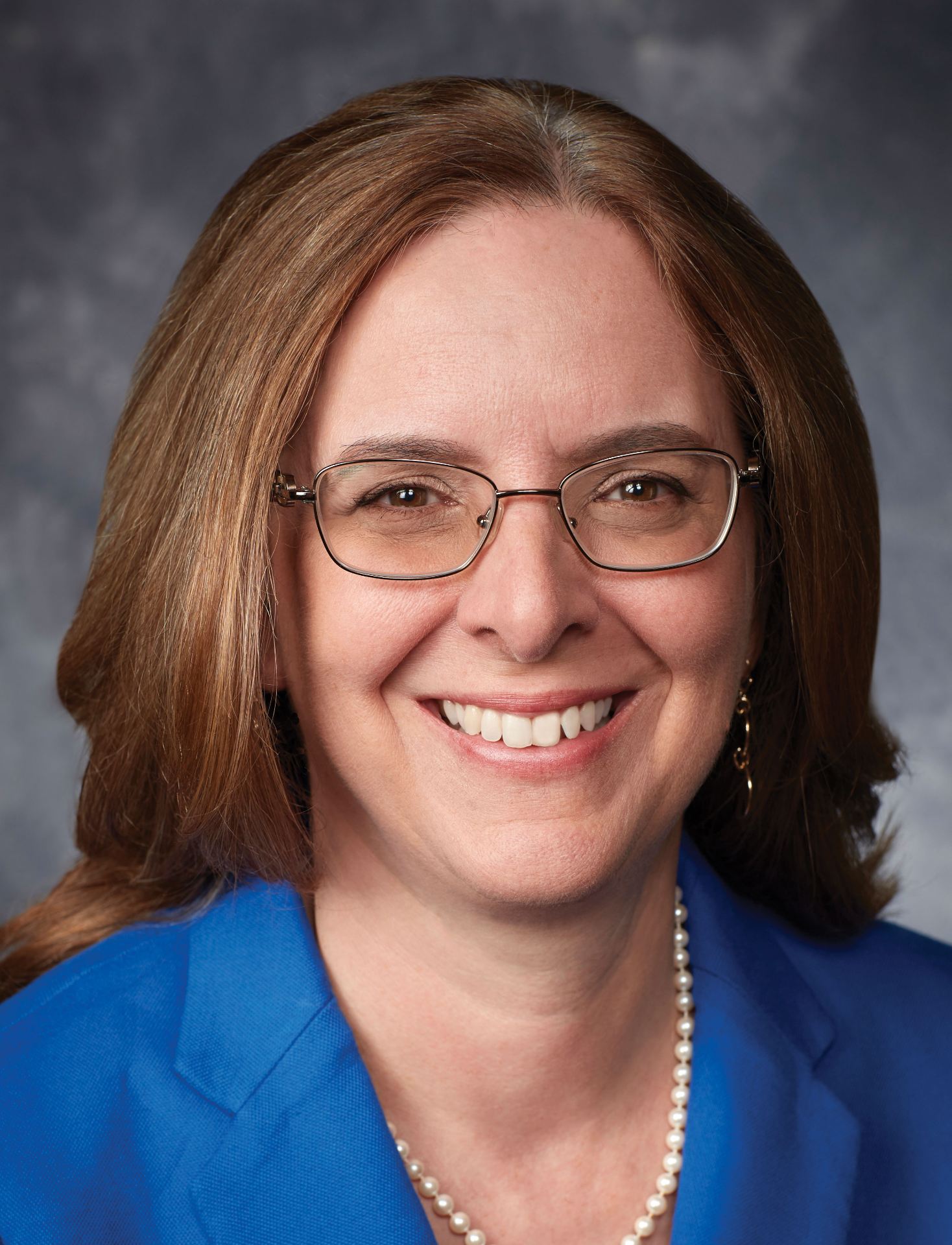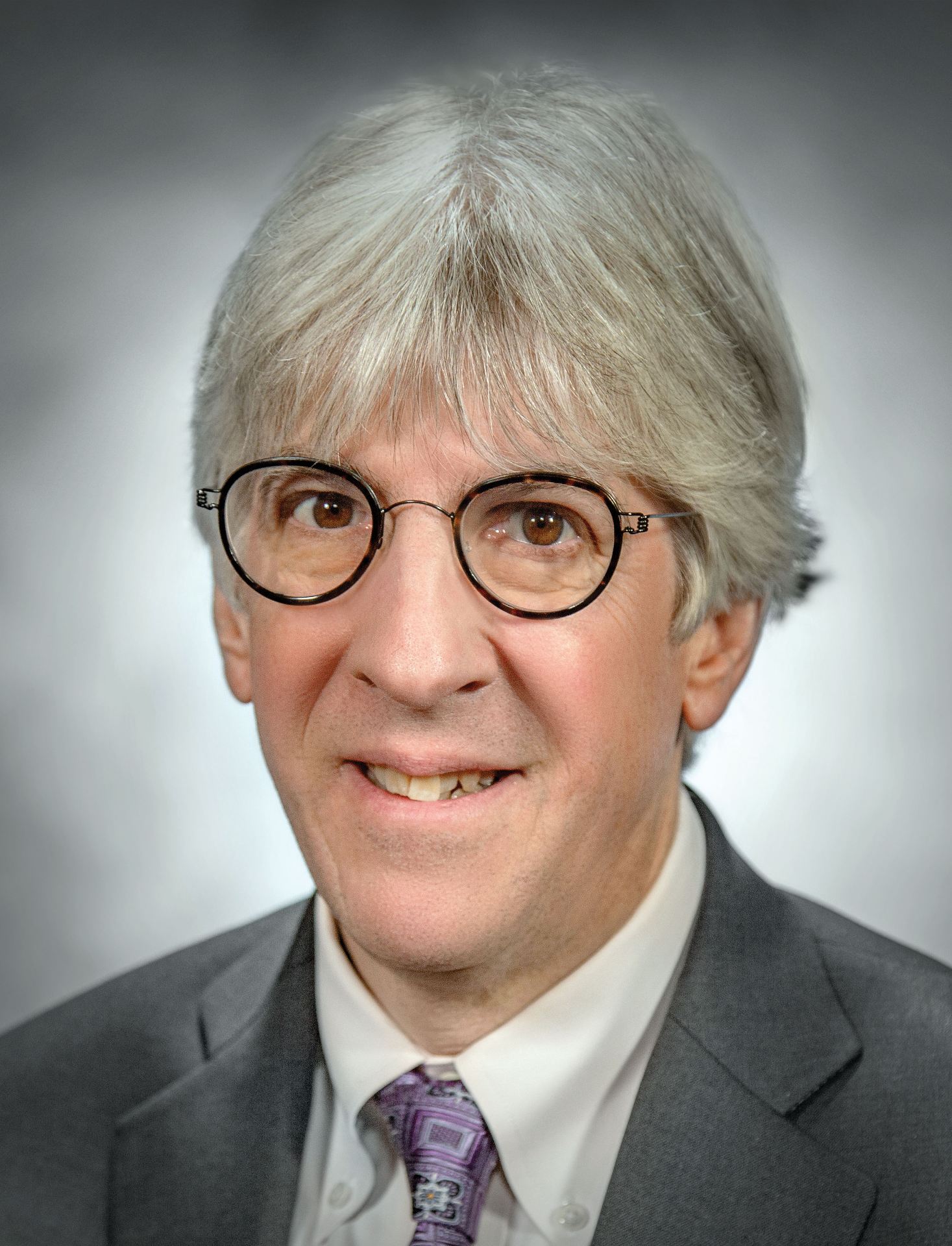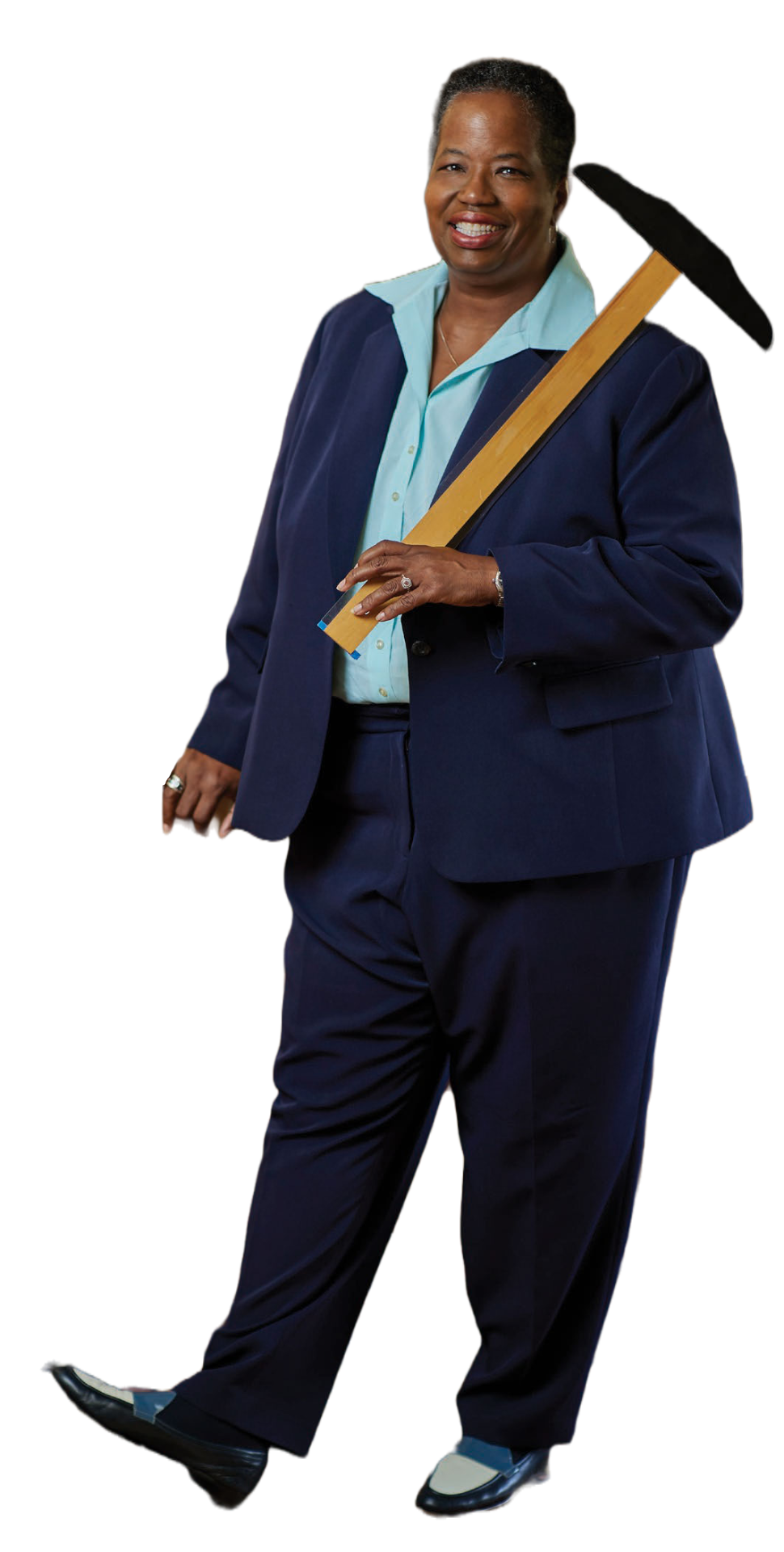HOW ENGINEERING LEADERS ARE CONSTRUCTING A BETTER UT DALLAS
From his days as an assistant professor, he raised his hand for university-level committee assignments. He enjoyed collaborating with colleagues in the arts and humanities so much, in fact, that leading the whole ship became the next logical step.
President Benson and other engineers and computer scientists in universitywide roles with responsibility across schools and units at The University of Texas at Dallas say that the university offers the perfect environment to apply the tools of their disciplines to the overall mission. From the University’s role in the region’s economy to employee rights, engineering leaders are making a difference.

that you’re going to have to work together to get there.”
Dr. Richard C. Benson
Against this nontraditional backdrop in an environment of explosive growth, UT Dallas leaders who come from an engineering or computer science background bring their own mix of skills: logic and analysis, organization, pragmatism, problem solving, yes — but also innovation, creativity and collaboration.
The University’s strategic plan for 2018 to 2025 sets out aggressive goals rooted in metrics that quantify UT Dallas’ standards, especially relative to benchmark institutions. While not all targets can be quantitatively measured, the plan has a decidedly analytical approach to tracking progress — from student enrollment numbers to the size of the endowment.
“I like to have goals that are uncomfortable,” Benson said. “Maybe it’s the engineer in me. I like to set a goal that you can picture reaching, but you also know that you’re going to have to work together to get there.”
Inspiring the next generation and developing a workforce are central to the University’s mission. But institutions are now expected to do even more. One theme of the plan is to become an economic engine for the region through research and development.
“There’s an expectation that the things that we do impact the world from research to the marketplace, and that we are part of the innovation machinery that happens, especially across here in North Texas,” said Dr. Joseph Pancrazio, vice president for research and innovation who also is a professor of bioengineering in the Erik Jonsson School of Engineering and Computer Science.
That means leading from behind, relying on scholarly and scientific training to create a fertile environment for the research pursuits of faculty and graduate students.
“Part of leadership in academia is trusting and building trust, and allowing excellent people to do the excellent work that they can do,” Pancrazio said.
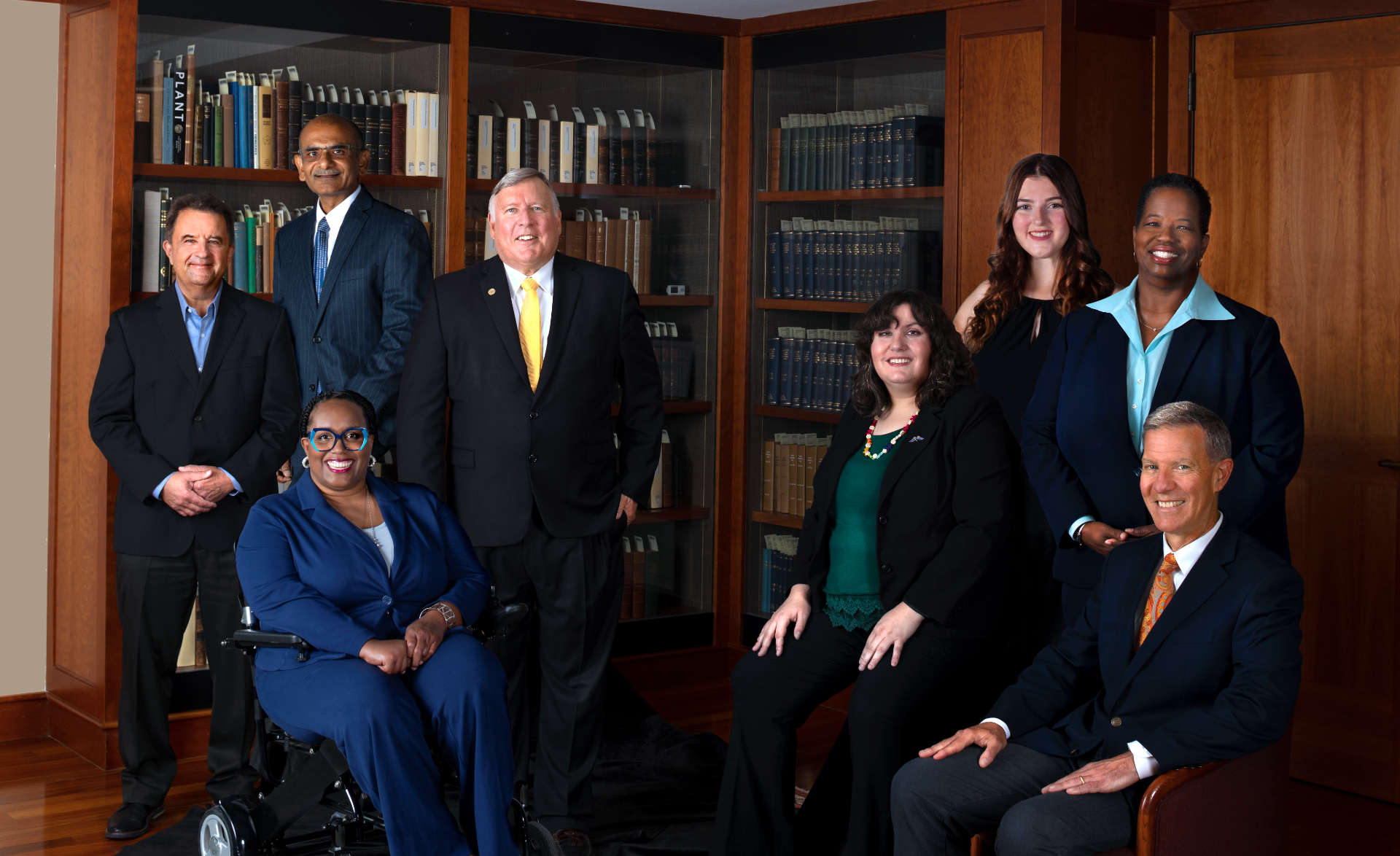
Universitywide leaders from the engineering and computer science community (from left to right): Frank Feagans, vice president (VP) for information technology and chief information officer; (seated) Dr. Yvette Pearson, VP for diversity, equity and inclusion; Dr. Ravi Prakash, speaker of the Academic Senate; Dr. Richard Benson, president of UT Dallas; Jennifer Klunk, Staff Council president; Kara Peak, inaugural Graduate Student Assembly president; Dr. Stephanie Adams, dean of the Erik Jonsson School of Engineering and Computer Science; and Dr. Joseph Pancrazio, VP for research and innovation.
Another part of leadership that engineers may be more likely to embrace is pragmatism, he added.
“Sometimes, you’re not going to get a perfect solution,” Pancrazio said. “Engineers understand that when you have a lot of different considerations, you have to make very principled, thoughtful, logical decisions — and you don’t have the time nor the luxury of being perfect. That’s just reality.”
Dr. Ravi Prakash, speaker of the Academic Senate and professor of computer science, said his background “imposes a certain discipline in how I approach any problem — whether with research, or teaching or administrative issues. For example, if I were writing a program, how would I ascertain its correctness? It’s like debugging a piece of code. A system made of people is way more complex than any code I will write, so I’m always conscious of that.”
As speaker, Prakash does a lot of listening and bridge-building as faculty debate often hot button issues, such as curriculum decisions or safety during the pandemic. To bring them to agreement, he gives them space to air their views, then with a full lay of the land — and crystal clear communication with forthright administrators, he added — he can set a path forward.
“If you keep the communication lines open in the culture that is UT Dallas that is far more productive,” said Prakash, also a professor in the Hobson Wildenthal Honors College. “It’s productive for the issue immediately at hand and in the long term, because it means you can continue to work together.”
Dr. Yvette E. Pearson, vice president for diversity, equity and inclusion who has a civil and environmental engineering background, joined UT Dallas in fall of 2021 with 26 years as a leader in engineering academia. She was drawn in large part by the innovative atmosphere, particularly by campus leaders who were open to pursuing new and better ways to ensure justice, equity, diversity and inclusion (JEDI) for community members.
“In the grand scheme of things, UTD is such a young institution,” she said. “Many institutions have centuries of historical inequities in the fabric of who they are. Being such a young institution presented more of an opportunity to model and shape how we see ourselves.”
Name: DR. RICHARD C. BENSON
Title: University President
Eugene McDermott Distinguished University Chair of Leadership
How, When: Selected by the University of Texas
System Board of Regents in 2016
Priorities: Attract talent; enrich the student experience; engage globally; enrich the arts; advance research; become an economic engine for the region; develop financial and administrative systems that sustain excellence; create a culture of philanthropy; ensure a sustainable, rewarding campus environment;
foster diversity, equity and inclusion

Benson holds a construction hat that reads “PRESIDENT.” He has established a reputation for new construction during his tenure, including the Engineering and Computer Science West Building and the Texas Instruments Biomedical Engineering and Sciences Building.
Pancrazio displays a photo of an implantable microelectronic array capable of recording brain signals. The complex device requires interdisciplinary collaboration and has been his main area of focus throughout his career.
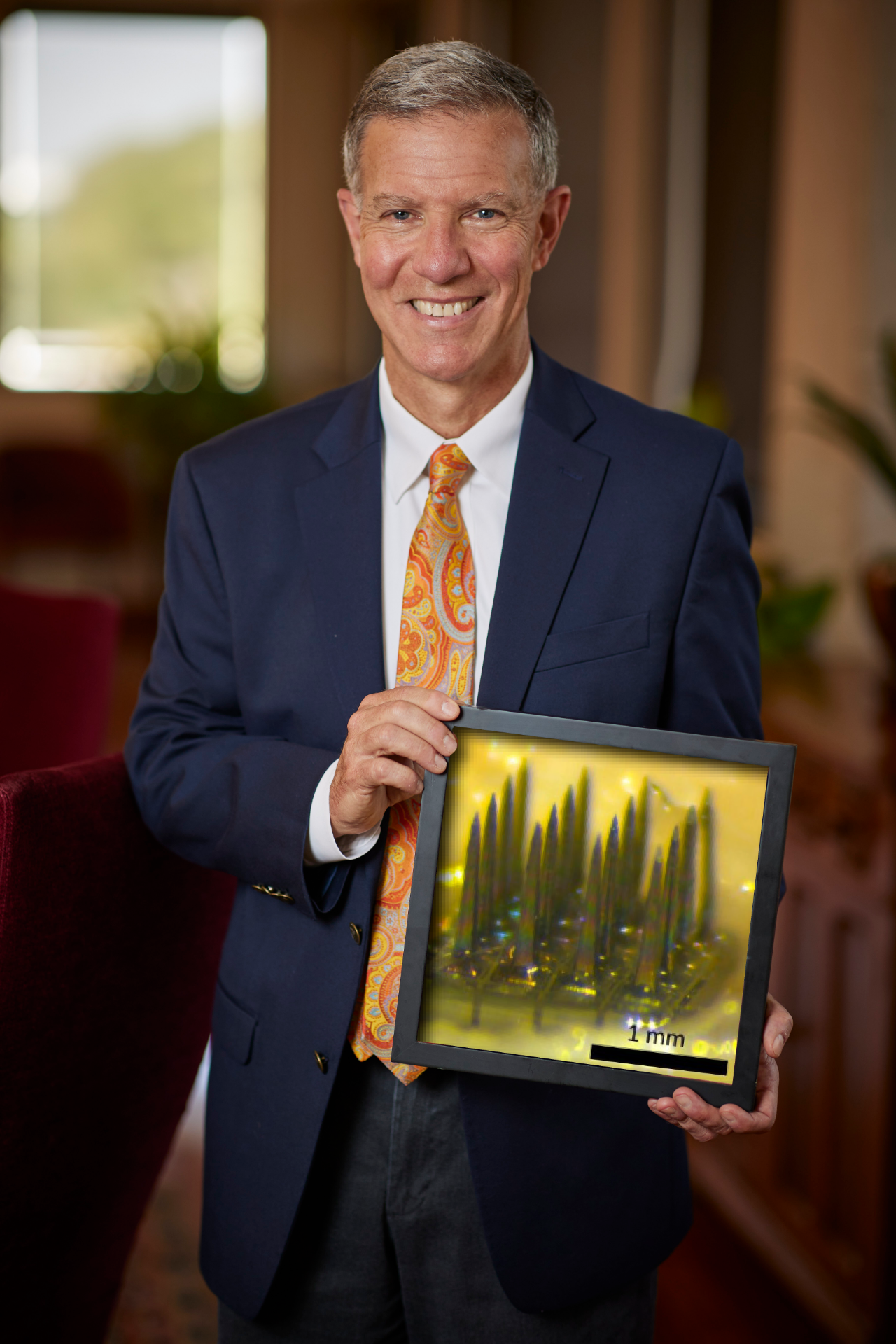
Name: DR. JOSEPH PANCRAZIO
Title: Vice President for Research and Innovation
Professor of Bioengineering
How, When: Appointed by UT Dallas President in 2018
Priorities: Reducing the burden for faculty in conducting world-class research, promoting team science that brings diversity, impacting the local community through the research enterprise
Name: DR. RAVI PRAKASH
Title: Speaker of the Academic Senate
Professor of Computer Science and in the
Hobson Wildenthal Honors College
How, When: Elected by senate members in 2018,
2020 and 2022
Priorities: Keeping faculty informed, working together,
healing and recovering from the pandemic;
establishing new model of work
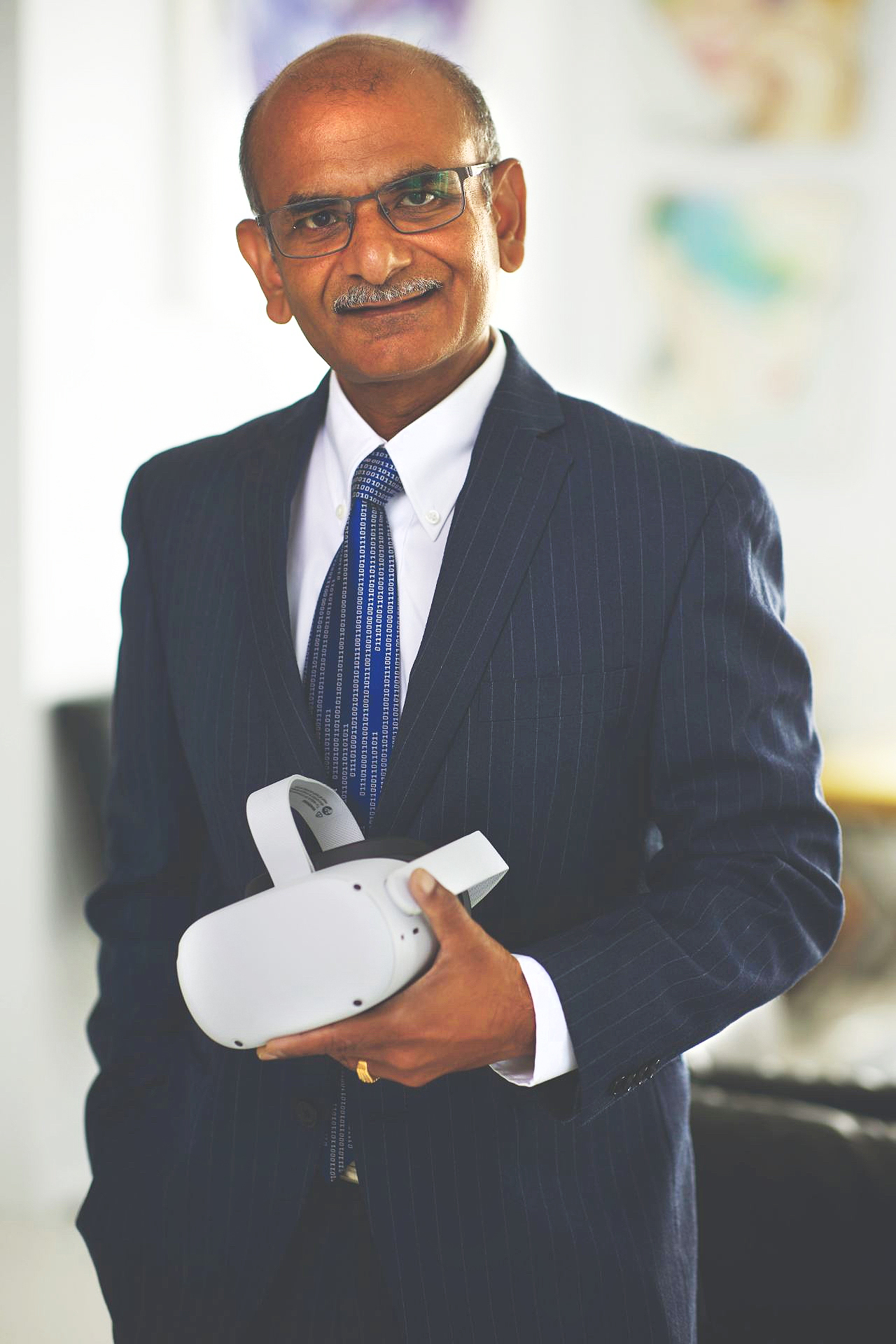
Prakash holds a virtual reality headset. His current research is on reducing bandwidth consumed in streaming 360-degree immersive videos for virtual reality and augmented reality scenarios.
Pearson displays the United Nations Sustainable Development Goals logo. The goals demonstrate the need for convergent approaches that bring together different ways of doing, thinking and knowing from engineers, scientists, policymakers, health professionals, local communities and other stakeholders to solve societal challenges in a way that advances justice, equity, diversity and inclusion for all.
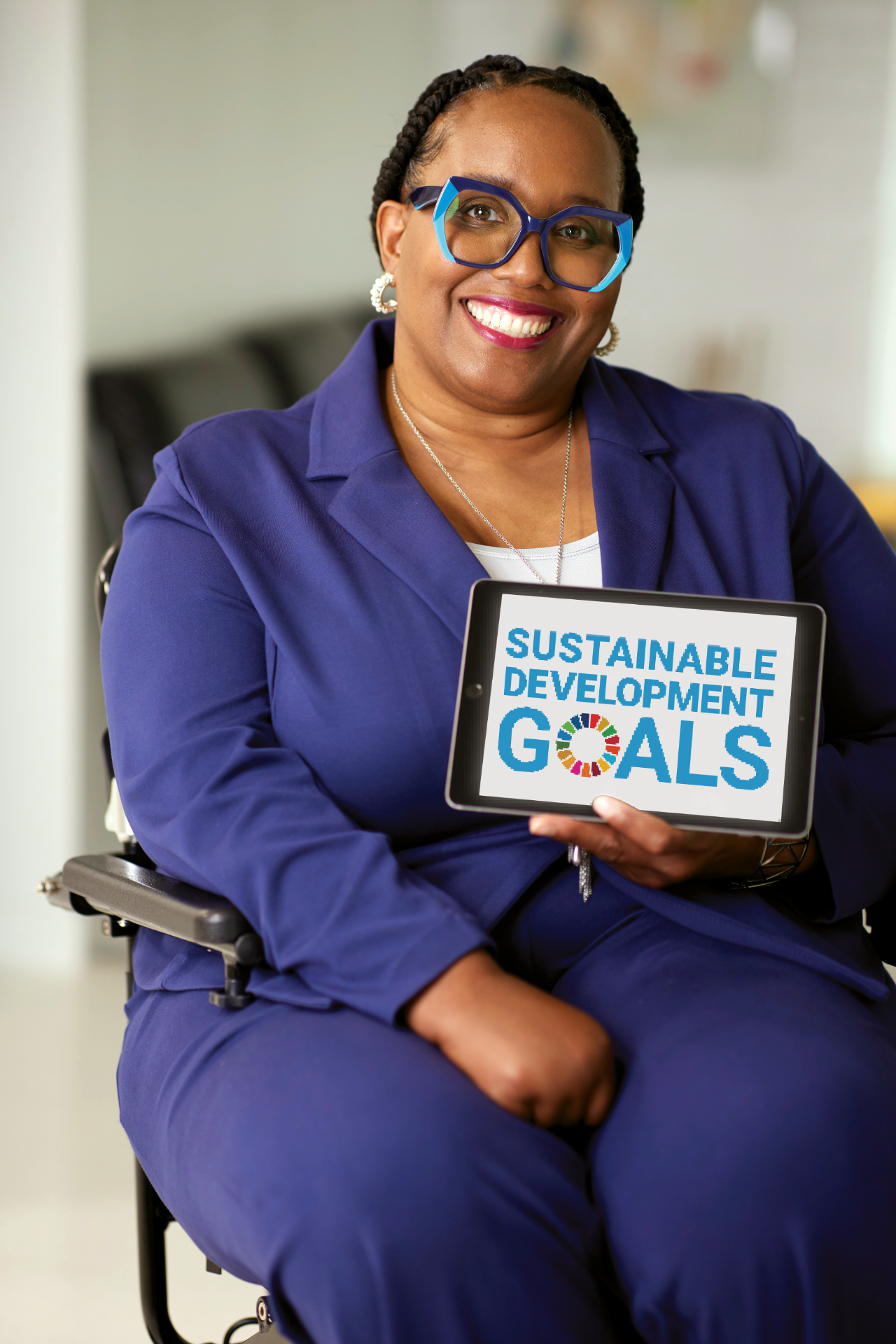
Name: DR. YVETTE E. PEARSON
Title: Vice President for Diversity, Equity and Inclusion
How, When: Appointed by UT Dallas President in 2021
Priorities: Advancing justice, equity, diversity and inclusion (JEDI) as a universal standard of practice inextricably linked to organizational excellence at every level
Name: JENNIFER KLUNK
Title: UT Dallas Staff Council President
Program Coordinator in the Department of
Mechanical Engineering
How, When: Elected by Staff Council representatives
in September 2021
Priorities: Remote work, employment equity and
staff ombudsperson

Klunk chose a gavel from high school mock trial for an item that is meaningful to her. High school mock trial is where she said she understood that she could work within an institutional structure for the greatest possible good.
An item of significance for Peak is a pair of fine tipped forceps. The bioengineering doctoral candidate said she uses these simple tools in almost every experiment for varying purposes and that without them, she would not be able to start.

Name: KARA PEAK
Titles: Graduate Student Assembly President,
Doctoral Candidate and Research Assistant in
Bioengineering
How, When: Elected by assembly members (UT Dallas graduate students) in 2020 and 2021
Priorities: Official recognition of the organization; increased stipends for and coverage by the student health insurance plan (SHIP) for teaching assistants, research assistants and graduate assistants; reduced cost of SHIP for other students
Name: : FRANK FEAGANS
Title: Vice President for Information Technology and Chief Information Officer
How, When: Selected by UT Dallas President in 2017
Priorities: Accelerate research advancements by helping UT Dallas researchers best leverage cyberinfrastructure services; enhance eLearning services; enrich the total student experience; improve productivity for faculty, students and staff no matter where they physically reside; provide efficient, effective, resilient and secure IT commodity services; grow and nurture a caring, collaborative and inclusive culture across a diverse OIT

The quote that reads, “I skate to where the puck is going to be, not where it has been,” from Wayne Gretzky, a famed Canadian former professional ice hockey player and coach, reminds Feagans to always anticipate what is ahead.
“To work in the JEDI space, you have to be a good problem solver,” said Pearson, who still adheres to advice she received years ago: “When you’re trying to embark on something new, especially something that seems out of the box, never ask if we can. Always ask how we can. The ‘how’ makes people actually stop and think.”
Jennifer Klunk, program coordinator in the Department of Mechanical Engineering, is president of the UT Dallas Staff Council. She is the third engineering staff member to serve in the role in recent years. The council is the voice for more than 2,500 staff members on a wide variety of issues, from parking costs and committee representation to cultural awareness.
“I’m always wanting to hear different voices and different views,” said Klunk, who grew up “speaking my mind.”
“One of the things I love about it is getting to see the world through other people’s eyes. To be able to advocate for staff to be appreciated in tangible ways — salary, benefits, work circumstances — is something that I feel is very important,” she said. “I’m not an executive; I’m in the trenches. I’m seeing things from the point of view of somebody who has to do a lot of the legwork. Being able to convey that to leadership is important.”
Innovation starts with collaboration. When bioengineering doctoral candidate Kara Peak visited UT Dallas for the first time, she was struck by the collaborative vibe of the department. Not only were principal investigators and graduate students welcoming and eager to answer her questions, they were curious about one another’s research.
“That trip sold me,” she said. “It showed me they had a genuine interest in what their colleagues were up to — even if they weren’t involved in the research. That’s not always the case in academia.”
Peak was the inaugural president of the Graduate Student Assembly (GSA) founded in 2018 to represent the interests of 9,000 students in all disciplines. Her goal was to have GSA officially recognized as a governing body to give graduate students a permanent voice in University matters. That occurred in spring 2021.
Of key concern during the pandemic was the safety of teaching and research assistants whose tuition benefits and stipends required them to be on campus. GSA’s efforts ensured graduate students were afforded the same exemptions as faculty members. Other priorities included to increasing stipend amounts and reducing health plan costs.
“Some of the things we’ve been able to effect have real impact for people at UTD in their daily lives and for future policy changes. Those will have lasting influence,” Peak said. “Don’t brush off getting involved with ‘smaller’ or local things. That’s how change begins.”

and that we are part of the innovation machinery that happens.”
Dr. Joseph Pancrazio
As head of the Office of Information Technology, Frank Feagans, vice president and CIO, said his office’s supportive role brings him great satisfaction.
In the beginning of his career, Feagans, who holds a bachelor’s degree in computer engineering and a master’s degree in computer science, was about to start a PhD program in computer science when his advisor had a massive stroke. With a young family to support, he switched to corporate work, landing on the leadership track. Returning to the business side of academia in 2011 and joining UTD four years later felt like coming home, he said.
“In corporate America, it wasn’t about making a difference for the greater good,” he said. “It was about the stock price. I felt like doing something that would feel more rewarding.”
Supporting the UT Dallas Strategic Plan is the most satisfying aspect of his job, Feagans said. This includes championing various student success initiatives, providing productivity tools and training for all UT Dallas employees and helping faculty in any way, including optimally leveraging high-performance computing and other cyberinfrastructure services for faculty research.
“We tell them, ‘Explain your science to us and we’ll walk you through what cyberinfrastructure services can help you do the research in the fastest, most cost-effective way,” Feagans said.
His team also offers guidance on information security and IT purchasing to 23 units across campus. And each year, more than 100 IT student workers are mentored in roles that give them real-world experience.
“My favorite thing is when the people who work for me and the customers they serve are happy,” Feagans said.
A college campus is a great place to make a difference, Benson agreed.
“A lot of people in the working world seek to emulate a campus environment because of the creativity and the ability to interact with seemingly disparate people,” he said. “We can continue to really define the future of UTD. In my inauguration address, I finished by saying that we’re all benefactors because you have this incredible opportunity to define the future traditions and the areas of strength. Not everyone gets to do that. It’s pretty extraordinary.”
University leaders in other disciplines benefit from engineering and computer science education. These include:
DR. INGA MUSSELMAN
Provost and Vice President For Academic Affairs, Cecil H. Green Distinguished Chair of
Academic Leadership
Postdoctoral Research Associate in the Department of Materials Science and Engineering and Precision Engineering Center, North Carolina State University
DR. HASAN PIRKUL
Dean of the Naveen Jindal School of Management, Caruth Chair
Bachelor’s Degree in Industrial Engineering from Bogazici University in Turkey. His PhD is in computer information systems, from the
business school at the
University of Rochester.
DR. STEVEN SMALL
Dean of the School of Behavioral and Brain Sciences, Aage and Margareta Møller Distinguished Professor in Behavioral and Brain Sciences
PhD in computer science from the University of Maryland
SERVICE LEADERSHIP IN an Evolving World
Jonsson School faculty members have served as leaders in national and international professional organizations for many years. Their work helps keep Jonsson School research and education at the forefront of the engineering field and among peer institutions, further cementing its reputation as a leader in engineering and computer science education.
“I consider myself to be a joiner, and I encourage it here,” said University President Dr. Richard C. Benson, a fellow and former board member of the American Society of Mechanical Engineers. “We’re showing leadership at the national and international levels. It’s just part of our growing maturity as a university.”
In recent years, faculty have given this commitment new meaning: The COVID-19 pandemic shut down conferences, scuttled professional education and threatened financial coffers. Read on to learn how four faculty members have tapped skills in creativity and problem solving to meet those challenges and to further their organizations’ impact.
STEPHANIE G. ADAMS
American Society for Engineering Education President, 2019-2020
The American Society for Engineering Education’s annual conference was less than three months away when the pandemic struck. Full-time staffers shifted into high gear, learning tech tools on the fly to create a virtual conference in a matter of weeks.
“We just dealt with a really wicked problem,” said Dr. Stephanie G. Adams, dean of the Jonsson School, holder of the Lars Magnus Ericsson Chair and professor of systems engineering, who was president at the time. “It’s so apropos when you talk about engineering as a profession. It was engineering in action.”
More than 12,000 engineering and computer science educators around the world are members of The American Society for Engineering Education’s (ASEE). Adams counts lifelong friends among them. She has attended all but one conference since her first in 1998 as a graduate student. Her first of many volunteer roles was to edit the newsletter for ASEE’s engineering management division.
Adams’ turn as president (book-ended by terms as president-elect and past president) demanded fresh ideas and a knack for creating teams that solve problems. She also used her role as a leader to inspire and to practice being transparent in uncertain times. When Adams found herself binging on snacks and TV shows during the pandemic, she revealed in her monthly president’s column her decision to take up cycling to get off the couch. On social media, friends and colleagues watched as ASEE’s president worked her way up to 40 miles a week and a level of fitness she hadn’t felt in years. Thanks for the motivation poured in.
“Service is the rent you pay for your time here,” she said. “And ASEE is a great organization to serve.”
DR. JOHN HANSEN
International Speech
Communication Association
President, 2018-2021 (two terms);
current board member
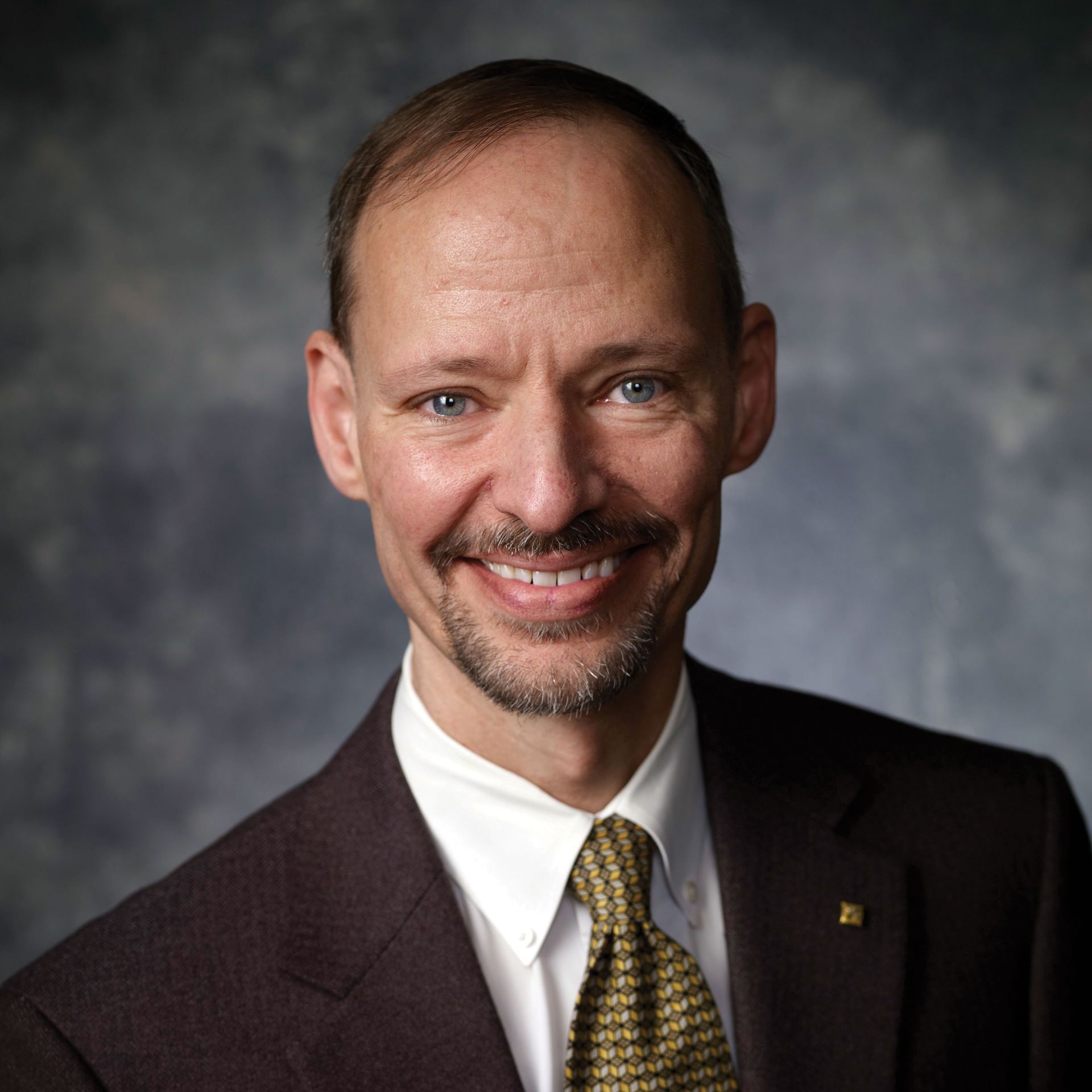
“
The speech communications community has been and continues to be committed to supporting diversity in all forms, regions and people worldwide.
Dr. John Hansen
”
International Speech Communication Association (ISCA), with 10,000 historical members, works in a wide range of fields that have speech communication at their heart, from engineering technology to linguistics and speech science.
Before the pandemic, Dr. John Hansen, Distinguished Chair in Telecommunications at UT Dallas, professor of electrical and computer engineering and associate dean for research in the Jonsson School, lobbied fellow ISCA leaders for remote participation in education and conferences. He knew it would enable attendance by members who couldn’t be there in person because of health or mobility barriers, visa constraints, lack of funding, or religious or cultural reasons. He was met with resistance — until the pandemic forced the switch.
ISCA members live all over the world. In some areas, such as the Middle East, Africa and South America, funding for conference travel is tight or nonexistent. Going virtual made attendance possible for people who had never been able to come and allowed a whole new diverse population interested in speech communication to be part of the community.
“All conferences going forward we will ensure some kind of remote or hybrid mode,” said Hansen, who was in his second term as president when the switch was made. “It helps enormously to bring in more people from underrepresented regions. It gives great opportunities for low-resource languages for speech science and technology to become more visible and of interest to educators and engineers/scientists at companies. This allows them to present papers and be part of the discussion.”
Hansen also oversaw the establishment and support of a diversity committee that explored, among other things, how many female members were ISCA fellows (3%, though they represent about a quarter of the members) and how to encourage more women to be nominated and recognized. An LGBTQ committee was also formed to offer a place of inclusion, especially for members in regions of the world where it’s high risk to identify as such. The speech communications community has and continues to be committed to supporting diversity in all forms, regions and people worldwide, Hansen said. He attributes these commitments to contributing to student membership doubling over the past five years.
DR. AMY WALKER
AVS®
President, 2020
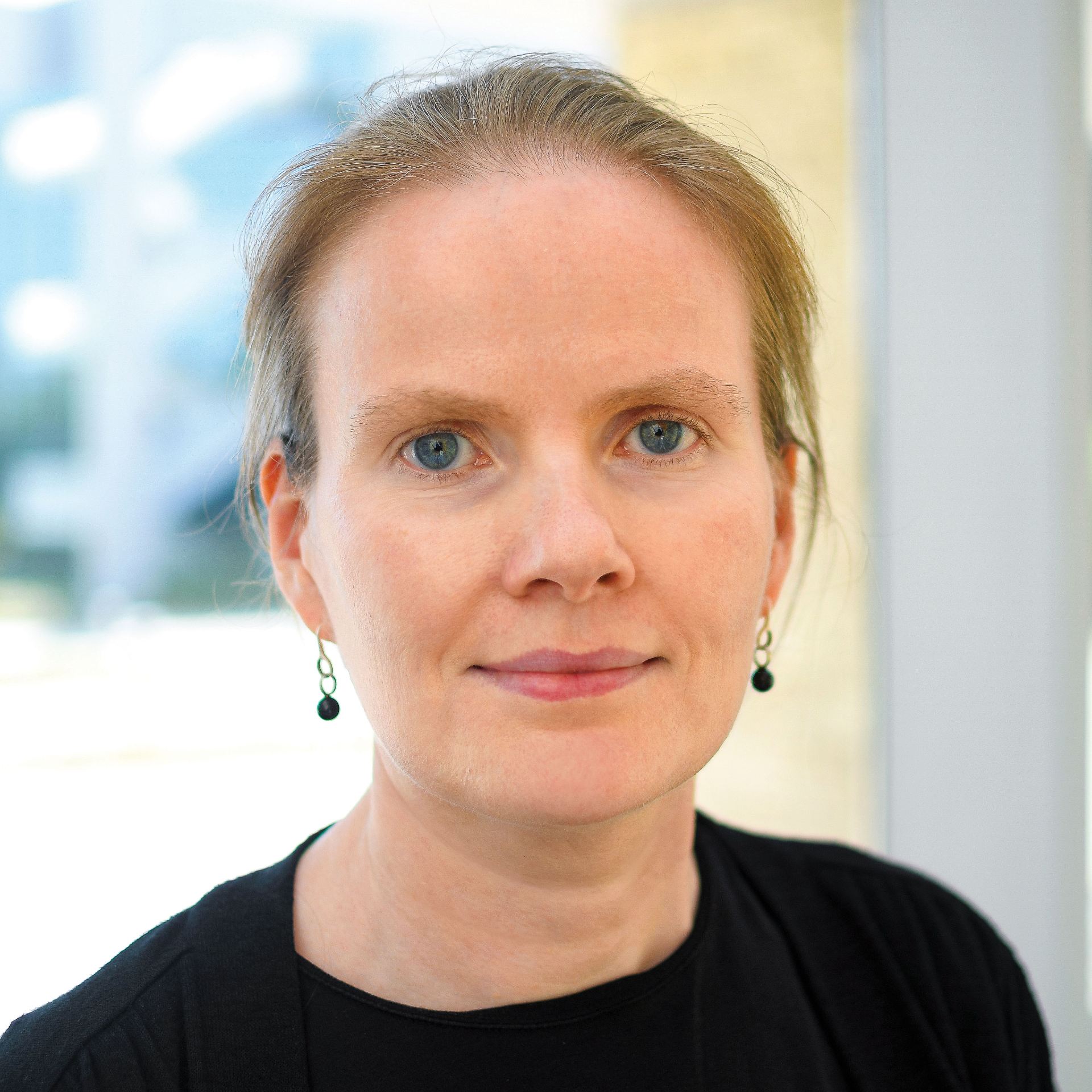
“
I think sometimes students get forgotten. I felt if they wanted to be part of a community, they really needed to have a voice.
Dr. Amy Walker
”
Dr. Amy Walker, professor of materials science and engineering in the Jonsson School, joined AVS right after 9/11. The camaraderie of the group, headquartered in New York City, was almost instant, she recalls.
“The support I got from them was and is incredible,” she said.
The 4,500 members of AVS are scientists and engineers who work in materials sciences — from biological systems (like implants in the body) to new applications of its original focus, vacuum technology.
Through AVS, she met more experienced professionals who became beloved mentors. In turn, Walker, who is associate dean for undergraduate education in the Jonsson School, looks for opportunities to support educators and engineers following her.
Walker came up through the ranks before being voted in as president-elect in 2019. When she stepped up as president in 2020, her plan was to improve diversity and inclusion, and she created a standing committee to ensure ongoing efforts.
She also started an early professionals committee to bridge the gap between student members and more established professionals. Since AVS began in the 1950s, students have voted only in their local chapter elections. Walker pressed to extend their involvement to the division and group levels, leading to a bylaw change allowing it.
“I think sometimes students get forgotten,” Walker said. “I felt if they wanted to be part of a community, they really needed to have a voice. I was able to explain how this would make it their professional home for much longer.”
DR. RASHAUNDA HENDERSON
Microwave Theory and Technology
Society of IEEE (Institute of Electrical and Electronics Engineers)
Current president
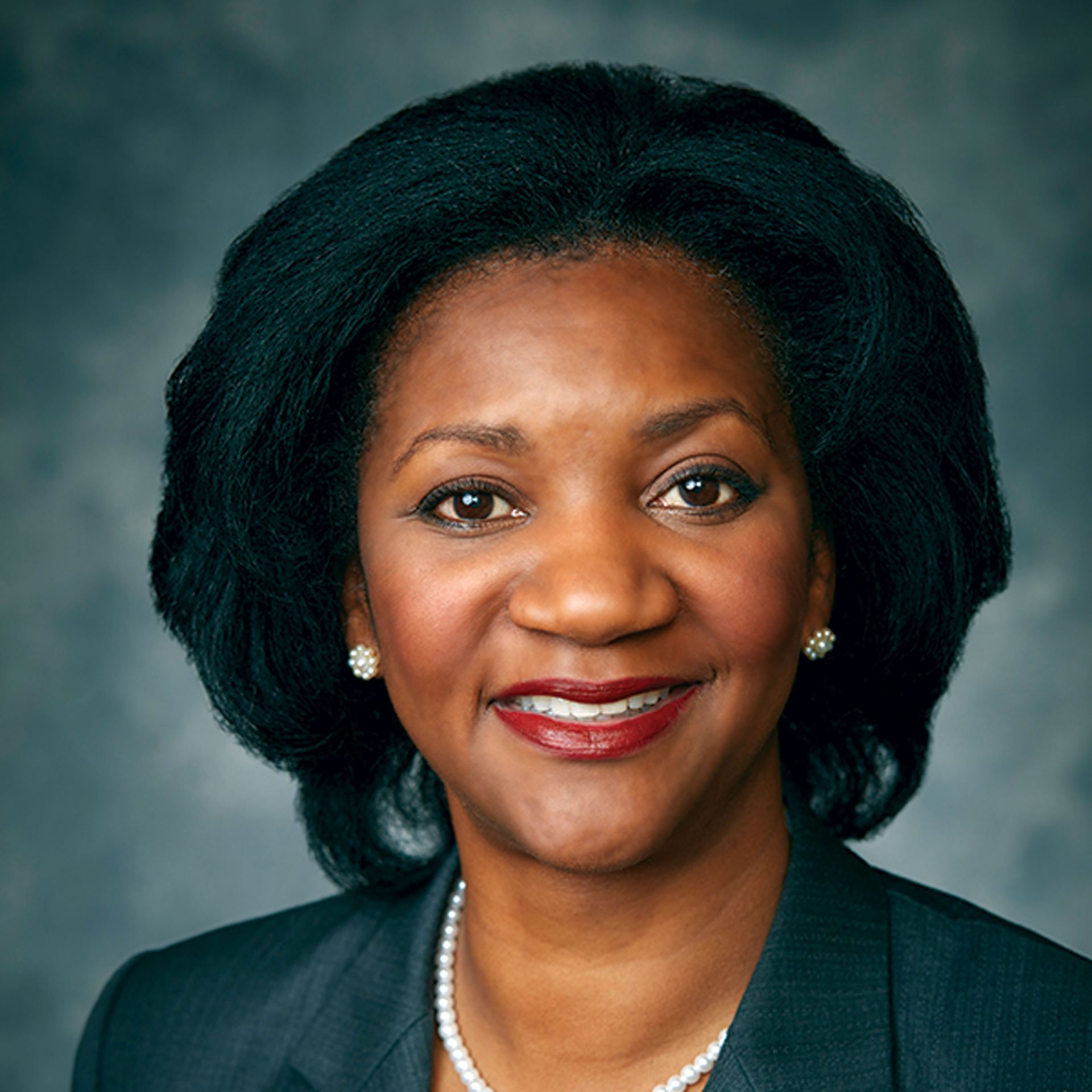
“
What do we need to be doing in the future, and are we addressing the needs of our entire community?
Dr. Rashaunda Henderson
”
Dr. Rashaunda Henderson, co-interim head and professor of electrical and computer engineering, was an undergraduate student when she joined Institute of Electrical and Electronics Engineers (IEEE), the largest professional technical organization in the world. She didn’t imagine that someday she would be president of one of IEEE’s largest divisions, the 11,000-member Microwave Theory and Technology Society, or MTT-S, overseeing more than a dozen standing committees and serving as a go-between the society and IEEE.
Henderson, also a Eugene McDermott Professor at UT Dallas, is taking up where her predecessor left off with an ad hoc committee pushing to attract more young members for the fresh ideas they can bring. As part of that, she’s also pressing for diversity, mentoring and inclusion; while she’s never felt excluded, only 8% of MTT-S members are women. Of the 1,500 graduate student members, however, women make up roughly a third.
“My role as president is to be a voice as well as a set of ears regarding the present and future directions of our society,” she said. “What do we need to be doing in the future, and are we addressing the needs of our entire community? Are students being cared for? Do women have what they need or are they being ostracized?”
Henderson says the society has been like a family to her. Growing ranks of satisfied members will be an important part of its future success.
“If people get involved, you want to figure out what it is that gets them to stay for 20-plus years. What is it we need to do to accommodate that?” she said. “I just hope to connect people so they can establish those long-term relationships and have a positive experience.”



